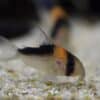To provide the best experiences, we use technologies like cookies to store and/or access device information. Consenting to these technologies will allow us to process data such as browsing behaviour or unique IDs on this site. Not consenting or withdrawing consent, may adversely affect certain features and functions.
The technical storage or access is strictly necessary for the legitimate purpose of enabling the use of a specific service explicitly requested by the subscriber or user, or for the sole purpose of carrying out the transmission of a communication over an electronic communications network.
The technical storage or access is necessary for the legitimate purpose of storing preferences that are not requested by the subscriber or user.
The technical storage or access that is used exclusively for statistical purposes.
The technical storage or access that is used exclusively for anonymous statistical purposes. Without a subpoena, voluntary compliance on the part of your Internet Service Provider, or additional records from a third party, information stored or retrieved for this purpose alone cannot usually be used to identify you.
The technical storage or access is required to create user profiles to send advertising, or to track the user on a website or across several websites for similar marketing purposes.















Emma Rivera (verified owner) –
I recently added two Corydoras egues, also known as Horseman Cory Catfish, to my community tank, and I couldn’t be happier! After about two weeks of observing them, I can see just how lively and friendly these little guys are. They have a beautiful golden edge to their fins that really catches the light, adding a lovely touch to my aquarium. These corydoras are great for keeping the substrate clean; I love watching them scuttle around, sifting through the sand for leftovers!
Compared to other catfish I’ve kept, like the common Corydoras aeneus, I find these to be a bit more active and social. They thrive in small groups and have a charming way of interacting with my other fish. The only minor concern is that they do appreciate a bit of hiding space among plants or decorations—so be sure to provide that in your setup!
Overall, I highly recommend these Horseman Cory Catfish for anyone looking to enhance their community tank. They are perfect for both beginners and seasoned aquarists. Shipping was quick, and they arrived healthy with clear instructions on care. I will definitely be purchasing more in the future!
Emily Carter (verified owner) –
I couldn’t be happier with my purchase of 2 Corydoras egues! These charming little catfish have brought so much joy to my 55-gallon community tank. After about three weeks of watching them settle in, I can confidently say they are not only beautiful with their golden edge but also incredibly lively and friendly. Unlike some other algae eaters I’ve tried, these guys interact well with my other fish, including tetras and guppies, creating a harmonious environment. They love to scavenge for leftovers and are great at keeping the bottom of the tank clean, which has reduced my algae growth significantly. One minor concern is that they do need soft substrate to thrive, so I recommend using sand or fine gravel. Overall, I wholeheartedly recommend Corydoras egues for any aquarist looking to add some character and charm to their setup. They are easy to care for and perfect for any community tank! I can’t wait to see how they grow and thrive in my aquarium. Great shipping experience too; they arrived healthy and active!